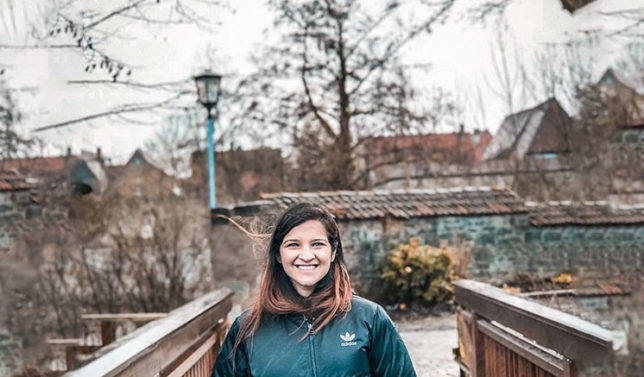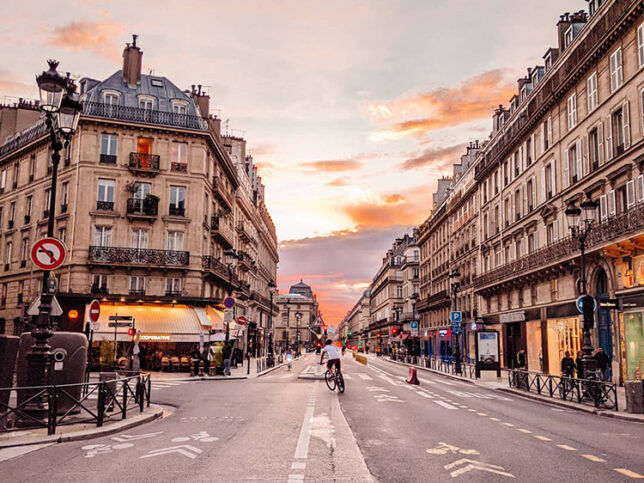On my first ever trip to Europe, I landed in Venice with a HUGE unwieldy suitcase. I had zero clue how to say hello in Italian (or thank you, please, sorry, where’s the bathroom?), and a wildly optimistic plan to hit five countries in 10 days.
It was magical. It was overwhelming. And it was full of mistakes.
If you’re gearing up for your first time in Europe, you can take a page from my diary and learn what NOT to do.
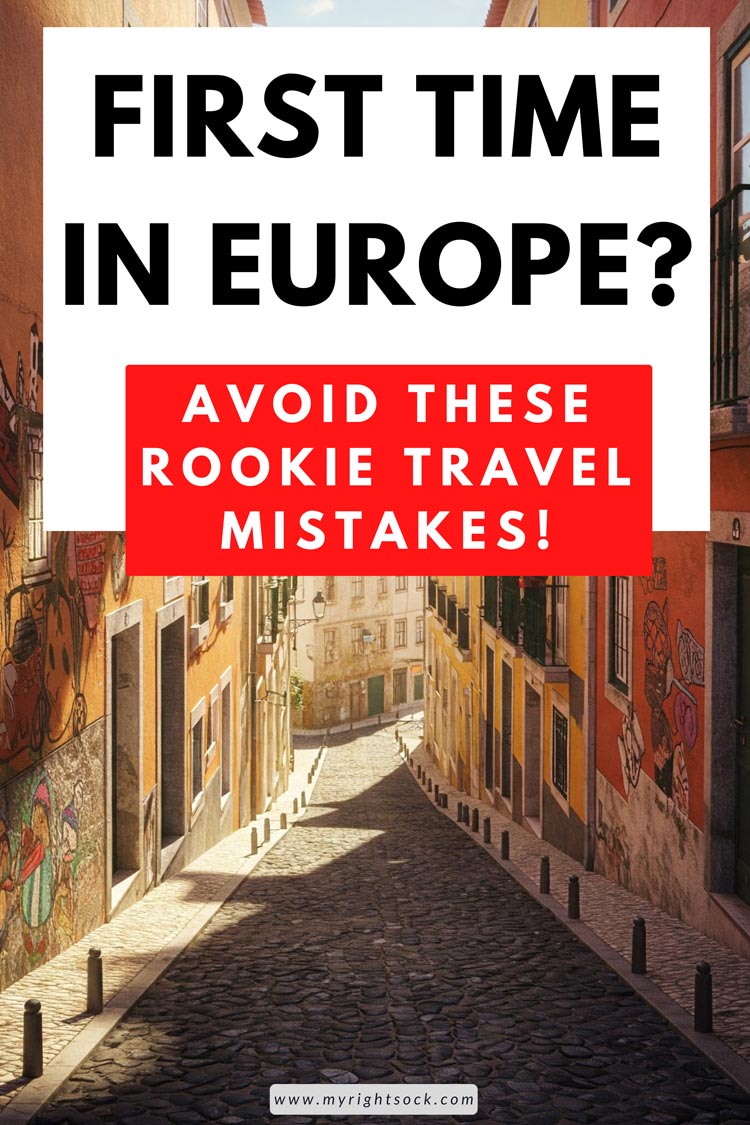
You see, Europe is a beautiful, weird, wonderful patchwork of countries, and while there’s no wrong way to explore it, it really helps have a smooth visit if you avoid certain rookie mistakes.
Keep reading for a lowdown on 10 super common travel mistakes that first-timers make in Europe, along with the easy fixes that’ll save your trip. These tips will save you time, money, and let’s just say a lot of awkwardness 😉
[You Might Like: 15 No-Fluff Europe Travel Tips to Save You Money]
1. OVERPACKING
If you’re lugging a giant suitcase across cobblestone streets in Lisbon, sweating through your toes and resenting every stairway/slope you encounter, congratulations – you’ve made the classic overpacking in Europe mistake.
Overpacking isn’t advisable in general, but it especially creates a problem when traveling to Europe.
The continent is full of cobblestone walkways which aren’t at all conducive to lugging suitcases about. While some cities are fairly flat, a lot of places like Edinburgh and Rome need you to walk steep streets.

Besides, elevators are not standard in hotels/airbnbs in Europe.
Then there’s the other thing about Europe – it’s all about getting around. You’re going to have to walk a fair bit. You’ll be catching high-speed trains, navigating complex subway systems, hopping on flights, figuring out tram schedules. Everything will be wayyyy easier if you don’t have a ton of luggage to worry about.
I really recommend sticking to carry on! I know the idea might seem bizarre, but you’ll be amazed at how easy and freeing it is to travel with just carry-on.
If you’re only hopping between cities (which is probably your plan), a small rolling suitcase plus a well-packed backpack should be all you need.
Besides this, you can always rotate clothes and do laundry at your accommodation when and where possible.
[You Might Like: 6 Ways to Getting Around in Europe]
2. IGNORING LOCAL CUSTOMS & ETIQUETTE
Europe is so wildly diverse, messing up on local customs is a classic travel mistake.
I think this also stems from a sort of a pressure to “travel like a local”; we’re so against the idea of being a tourist that we end up trying too hard, sometimes.
Honestly though, there’s no shame in being a tourist as long as you’re respectful and open to learning.
That said, it’s always helpful to do a little research on the place you’re visiting. Understanding the local culture, even just a bit, can make your experience more enriching.
For instance, in most countries, even something as simple as greeting people, or using “please” and “thank you” in the local language, can go a long way.
It also helps to be aware of certain behaviors that might be considered rude or inconsiderate.

Here are some examples of cultural quirks in European countries:
- In Italy and France, it’s common to greet people with a kiss on the cheek, but in Nordic countries that might feel too forward or uncomfortable.
- In France, you’ll quickly notice the emphasis on politeness. Enter any shop, restaurant, or even the metro, and a “bonjour” (good day) is expected before you speak about anything else.
- In Germany, punctuality is taken very seriously.
- Tipping is a whole other deal. In the U.S., tipping is pretty much mandatory but in much of Europe, tipping practices can vary widely. In Spain, service charges are often included in your bill. In Hungary, a small tip is appreciated but not expected. Knowing when to tip and how much can make a huge difference in how you’re perceived.
Reading up on these things shows that you care and that you’re not just passing through as a tourist, but as someone genuinely interested in connecting with the place.
3. UNDERESTIMATING TRAVEL DISTANCES & TIME
When you’re planning your first time Europe travel, the idea of hopping from one famous city to the next seems totally doable. After all, Europe is small, right?
Sure, you can often breeze through European cities easily. But Europe is also deceptively vast.
And those “quick trips” from city to city can eat up way more time than you’d think.
In Europe, countries may be small, but the travel times aren’t always intuitive. Like how a 2-hour train ride might not be as straightforward as it seems. Trains often require multiple transfers, or you could end up taking a slower train that crawls through small towns, making random stops.
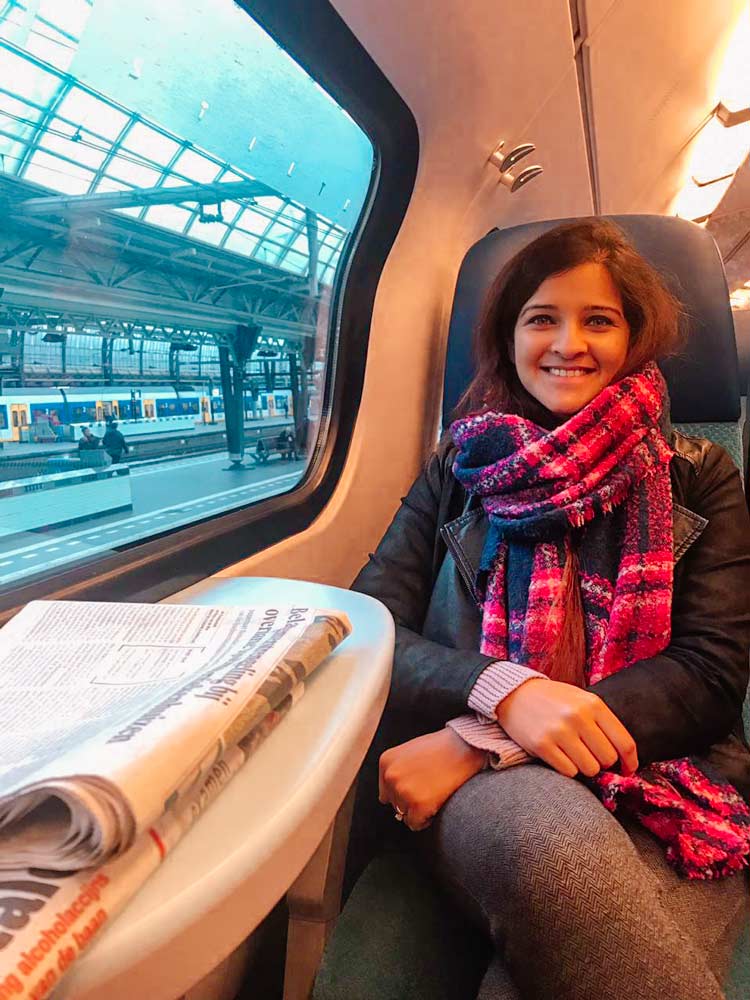
Plus, trains are often delayed or run at times that don’t always align perfectly with your itinerary.
Flying is also given more credit than due, thanks to the prolific low-cost airlines in Europe. In theory, flying from London to Paris may be a short haul, but by the time you factor in security lines, delays, and airport commutes, you might be wasting half a day getting to your destination.
It’s tempting to stuff your schedule with back-to-back trips to every must-see city, but your best bet, when traveling to Europe, is to take it slow(er).
Instead of trying to cram in four cities in five days, pick one or two cities and explore them in-depth. You’ll have a more rewarding experience when you’re not spending most of your trip in transit.
Websites like Omio.com can help you get an accurate estimate of travel times between cities, and the best way to get there – train, bus, or plane.
Also factor in some buffer time, especially if you have tight connections. Delays are inevitable, and not all airports/train stations are the same. I learned this the hard way in Zurich airport, where a short transfer turned into a confusion-filled, mad dash between terminals (I had to take an underground metro to get to my gate!)
I get the travel FOMO – the urge to “see it all” in one visit to Europe. But embrace a slower pace, and you’ll be able to truly soak in the rich culture, history, and beauty. Because those are the things that make Europe what it is!
4. FALLING VICTIM TO SCAMS & PICKPOCKETS
Recently, my parents were visiting us in Berlin and we were out to take a boat tour on the Spree (classic Berlin must-do!). A guy stopped us and said he was raising money for a charity, and was collecting signatures for a “petition” to get more funds.
He was really persuasive, and my gullible parents signed the paper (what’s the worst that could happen?) The guy immediately began asking for money “because you signed!” He started badgering them and raising his voice, trying to embarrass them into paying up.
I stepped in and told him off – because I’ve lived here and am well aware of the myriad Europe scams. But to a first-time visitor (and to my folks), it can be incredibly disconcerting.
Besides the “shame-you-into-paying” scam that’s pretty much everywhere, Europe is also a hotspot for pickpockets.
Cities like Rome, Paris, Prague, and Barcelona are full of incredible sights… and unfortunately, full of opportunists who know exactly how to take advantage of starry-eyed travelers on their first time in Europe.
These guys work in teams, and always look non-threatening. They know the metro maps inside out. They know which cafes have people leaving bags on the backs of chairs.
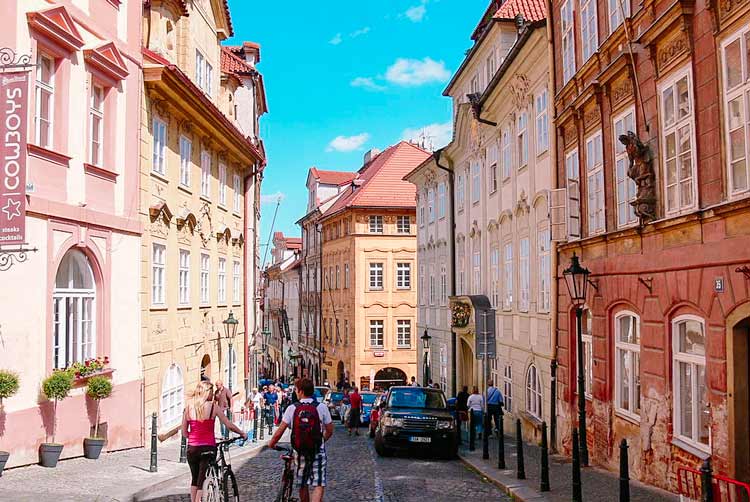
The Most Common Scams in Europe
Here are a few real-life, annoyingly effective scams that are pervasive in Europe:
- The Bump: Someone “accidentally” bumps into you in a crowd. Another swoops in to flick your wallet.
- The Fake Petition (or Friendship Bracelet) Hustle: Usually done by teens or older women. They engage you in conversation, sometimes even grabbing your wrist to tie a bracelet “for free” – while their partner picks your pocket or dips into your open bag.
- Fake Cops: They flash a badge (often fake), ask to check your bag or wallet “for drugs” or “counterfeit bills”, then slyly take a few bills before returning it.
- The Classic Grab-and-Go: You leave your phone on a cafe table and proceed to look at the menu. Someone runs past. Your phone runs with them.
5. NOT VALIDATING PUBLIC TRANSPORTATION TICKETS
Let me paint you a picture: I’m in Milan, clutching a focaccia and riding the tram like a local. Then a transport police guy (in plain clothes, by the way) comes around and asks for my ticket. I hand it over. He tells me matter of factly, “You didn’t validate; here’s your €60 fine.”
That, my friend, is how I learned that validation is key (for humans, it’s social. For public transport in Europe, it’s procedural 😝) *laughs hysterically at own joke*
This is something no one really tells you before your first time traveling in Europe: in a lot of countries – Italy, Germany, Austria, Czech Republic, to name a few – buying a ticket isn’t enough. You have to validate it too.
That means stamping it on a little machine as soon as you board the subway, tram, or bus. This is how they timestamp your journey, and without that timestamp, the ticket is considered void.
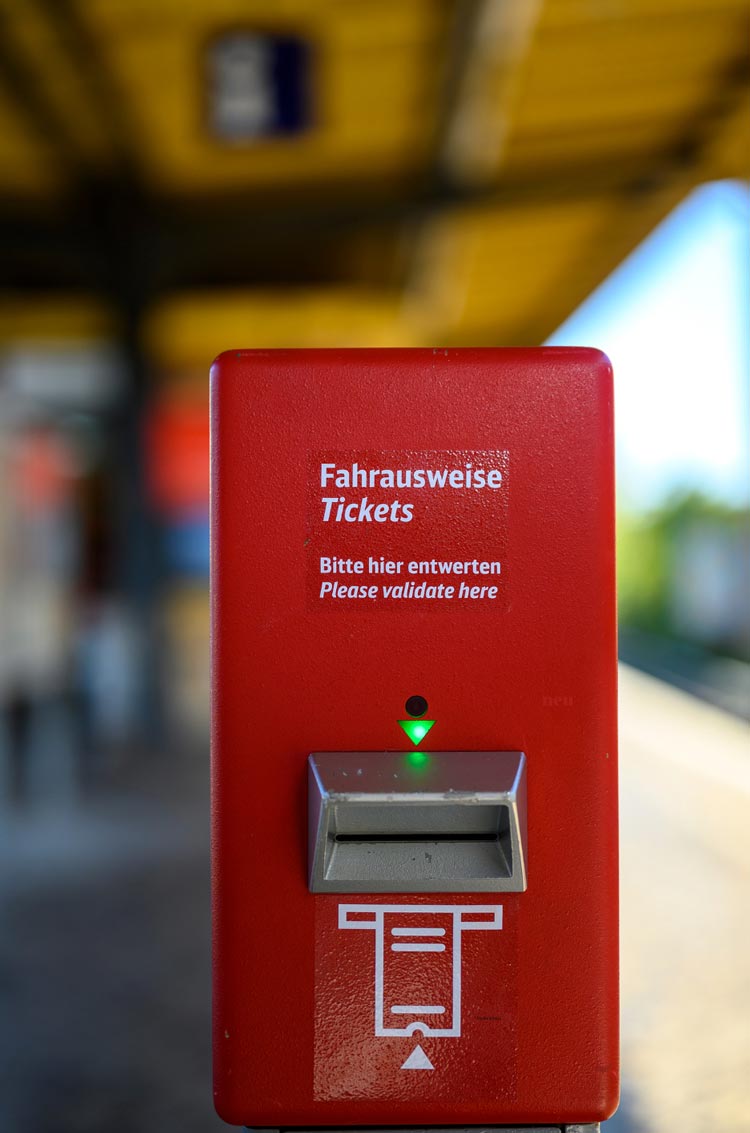
Unlike in, say, New York where conductors enforce payment, many European cities operate on an honor system. You can physically walk onto a tram or train without showing a ticket to anyone. Random spot checks happen all the time, though, and the officers don’t care if you’re a tourist or if this is your first time in Europe. “I didn’t know” doesn’t get you a pass.
If you buy mobile tickets, those usually get auto-validated upon purchase.
This is not the rule everywhere, of course. In the Netherlands, France and the UK, there’s a tap-in/tap-out system where validation happens digitally when you scan your card or phone.
6. NOT BOOKING MAJOR ATTRACTIONS IN ADVANCE
We’ve all seen Instagram vs reality pics of the Colosseum, choc-o-bloc with people at 2pm on a sunny Roman afternoon, sweaty, tired, and waiting in never-ending queues.
That’s the truth about popular European attractions. The Louvres and Colosseums are ALWAYS busy. And if you want to avoid standing in long lines, a travel tip worth its weight in gold is to book in advance.
While spontaneity sounds sexy, it doesn’t always play nice with places that pull in millions of visitors a year.
Major attractions like the Eiffel Tower, the Vatican Museums, the Sagrada Família, and the Anne Frank House require advance booking. And not just the day before. We’re talking weeks (sometimes months) in advance, depending on the season.
This is because European sites have strict daily visitor caps, to ensure crowd control.
7. OVERLOOKING THE BENEFITS OF PUBLIC TRANSPORTATION
I’m from India, and we Indians are travel snobs when it comes to public transportation. That’s also true for many other parts of the world, like North America, for example. Buses and trains are often the last resort, and you just Uber everywhere.
Public transportation in Europe, though, is such an inextricable part of experiencing the continent. And it’s BRILLIANT, if we’re being modest.
Subways, trams, buses, regional trains – there’s a whole gamut of options. And they’re all clean (usually), fast, and built into the daily rhythm of European life. Skipping them means missing out.
Europe has mastered the art of getting from Point A to Point B without a car. Cities like Berlin, Vienna, and Amsterdam have public transport networks that are seamless in their efficiency.
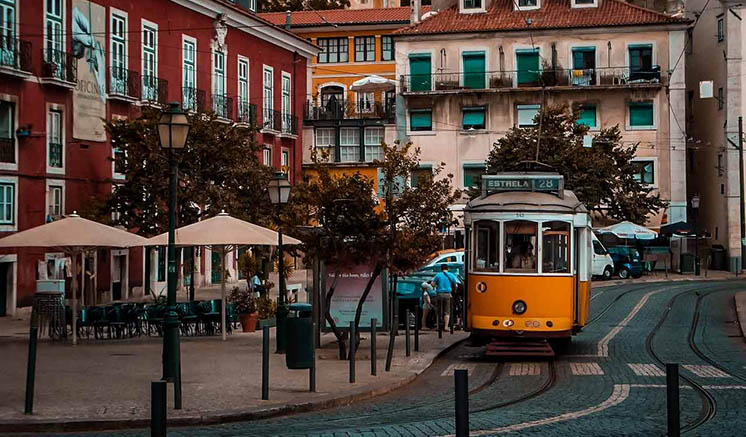
Everything runs like clockwork. Well, mostly (the occasional strikes and delays notwithstanding).
Not to mention that it’s wayyy cheaper.
A single Uber across town in Paris could be upwards of €20. A day pass for the metro, by contrast, is usually less than €15.
Also, when you hop on a tram or take the metro in Europe, you’re slipping into the daily life of a city. You’re people-watching, you’re hearing snippets of different languages, you’re being a local – even if it’s your first time in the city.
Navigating public transport can be intimidating, so it’s always worth looking up and downloading transit apps in advance. Usually every city has a different app. You can download the app and look up the route for your destination (on Google Maps).
If you’re in one place for longer than a day, will move about a lot but won’t/can’t walk much, buy a travel pass. It’s available for a day, 2 days, sometimes even 5 days. It’s cheaper and way less hassle.
Also if you MUST take a cab, go for local options instead of Uber (which may turn out to be costlier). While different cities have their own local taxi services, some of the ubiquitous ones in Europe are Free Now, Bolt and Kapten.
8. ONLY STICKING TO TOURIST HOTSPOTS
I’m absolutely not going to beat you on the head with the whole “Be a traveler, not a tourist” spiel.
I, for one, LOVE tourist sites. I mean they’re popular for a reason.
And they’re undoubtedly worth seeing… at least once.
But the thing most “5 Top Things to Do in X” articles miss is that there’s SO much more to Europe than the bucketlist items.
On my first trip to Europe, I was a checklist traveler.
Rome: Colosseum.
Barcelona: Sagrada Familia.
Amsterdam: Anne Frank House.
And while all of those were amazing in their own way, they were also crowded, rushed, and weirdly disconnected from the actual rhythm of the cities they belong to.
From a European perspective, cities are lived-in spaces. Locals don’t hang out at Buckingham Palace or hover around the Leaning Tower of Pisa all weekend. They’re sipping espresso in a tucked-away piazza in Bologna, they’re hiking in Slovenia’s Julian Alps, or dancing at a music festival in Nuremberg.

To avoid the “tourist trap”, here are some things you can do:
- Pick a base city, then explore the surroundings. I saved one day from my Copenhagen itinerary to head to Malmo via the Øresund bridge. The ride was just as fascinating as the city!
- Leave space in your itinerary for wandering. Leave one day without plans. Walk aimlessly without an agenda. People watch. Be spontaneous.
- Ask locals for recommendations. Bartenders, baristas, bookstore owners. They always know the good stuff. You won’t know if you don’t ask.
- Sign up for experiences. Take a cooking class or join a group tour. THE BEST way to explore a city.
****
These travel tips will ensure your first time in Europe is smoother, more fun, and more enhancing than disappointing or awkward. Of course, I’ve barely scratched the surface here.
Europe travel experts: any other tips you want to add to the list? Drop your mandatory Europe travel tips below!



